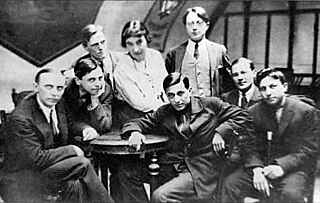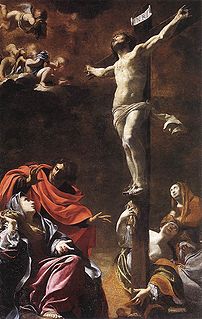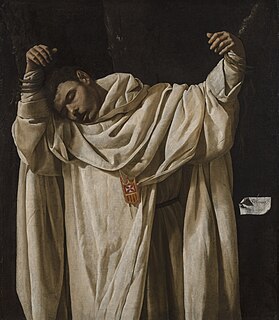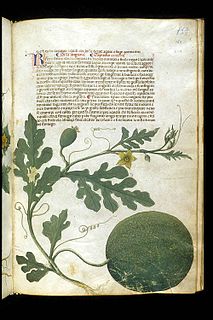
Serapion was a Patriarch of Antioch (191–211). He is known primarily through his theological writings, although all but a few fragments of his works have perished. His feast day is celebrated on October 30.
The Sacramentary of Serapion of Thmuis is a work of Saint Serapion, or Sarapion, bishop of Thmuis in the Nile Delta and a prominent supporter of Athanasius in the struggle against Arianism. He is best known in connection with this prayer-book or sacramentary intended for the use of bishops.

May 13 - Eastern Orthodox Church calendar - May 15

May 14 - Eastern Orthodox Church calendar - May 16

July 12 - Eastern Orthodox Church calendar - July 14

The Serapion Brothers was a group of writers formed in Petrograd, Russian SFSR in 1921. The group was named after a literary group, Die Serapionsbrüder, to which German romantic author E.T.A. Hoffmann belonged and after which he named a collection of his tales. Its members included Nikolai Tikhonov, Veniamin Kaverin, Mikhail Zoshchenko, Victor Shklovsky, Vsevolod Ivanov, Elizaveta Polonskaya, Ilya Gruzdev, Mikhail Slonimsky, Lev Lunts, Vladimir Pozner, Nikolay Nikitin and Konstantin Fedin. The group formed during their studies at the seminars of Yuri Tynyanov, Yevgeni Zamyatin, and Korney Chukovsky and the Petrogradsky Dom Iskusstv. The group was officially organized at its first meeting on February 1, 1921, and "as long as their headquarters remained in the House of Arts, met regularly every Saturday."

Thmuis is a city in Lower Egypt, located on the canal east of the Nile, between its Tanitic and Mendesian branches.
Serapion is a given name, a variant of Seraphin.

April 6 - Eastern Orthodox liturgical calendar - April 8

Mara bar ("son of ") Serapion, sometimes spelled Mara bar Sarapion was a Stoic philosopher from the Roman province of Syria. He is noted for a letter he wrote in Syriac to his son, who was also named Serapion. The letter was composed sometime after 73 AD but before the 3rd century, and most scholars date it to shortly after AD 73 during the first century. The letter may be an early non-Christian reference to the crucifixion of Jesus.

Saint Serapion of Algiers was an English Roman Catholic Mercedarian priest and martyr. Thomas O'Loughlin says Serapion was Scottish by birth. Serapion is acknowledged as a proto-martyr. He was the first of his Order to merit the palm of martyrdom by being crucified and cut to pieces.
Yahya ibn Sarafyun a Syriac physician, known in Europe as Johannes Serapion, and commonly called Serapion the Elder to distinguish him from Serapion the Younger, with whom he was often confused.

Serapion the Younger was the author of a medicinal-botany book entitled The Book of Simple Medicaments. The book is dated to the 12th or 13th century. He is called "the Younger" to distinguish him from Serapion the Elder, aka Yahya ibn Sarafyun, an earlier medical writer with whom he was often confused. Serapion the Younger's Simple Medicaments was likely written in Arabic, but no Arabic copy survives, and there is no record of a knowledge of the book among medieval Arabic authors. The book was translated to Latin in the late 13th century and was widely circulated in late medieval Latin medical circles. Portions of the Latin text make a good match with portions of a surviving Arabic text Kitab al-adwiya al-mufrada attributed to Ibn Wafid. The entire Latin text is very heavily reliant on medieval Arabic medicinal literature; and it is essentially just a compilation of such literature. It is exceedingly clear that the book was not originally written in a Latin language.

Saint Serapion or The Martyrdom of Saint Serapion is a 1628 oil on canvas painting by the Spanish artist Francisco Zurbarán (1598–1664). The work was commissioned by the Mercedarian Order to hang in the De Profundis hall of their monastery in Seville. Zurbarán is noted for his portrayals of penitent or martyred monks and saints. Critic Tom Lubbock used this painting to illustrate a difference in the way the martyrdom of two different saints were depicted. He contrasted the understated and calm depiction of St. Serapion's violent death, with the equally or more violent death of the Jesuit priest and martyr Saint Edmund Campion (1540–1581) who was publicly hanged, drawn and quartered in London in December 1581. The art critic draws a comparison in the manner of depiction of Campion's death and that of Saint Serapion of Algiers (1179–1240), a Mercedarian friar who fought in the Third Crusade of 1196 and was later martyred.
Asclepiades of Antioch was Patriarch of Antioch and martyr. He succeeded Serapion as Patriarch of Antioch in 211. He was given the title of martyr, due to the trials he endured during Roman persecution.

Elizaveta Grigorevna Polonskaya, born Movshenson (Russian: Мовшенсо́н; June 26 [O.S. June 14] 1890 – January 11, 1969), was a Russian Jewish poet, translator, and journalist, the only female member of the Serapion Brothers.

March 20 – Eastern Orthodox liturgical calendar – March 22








